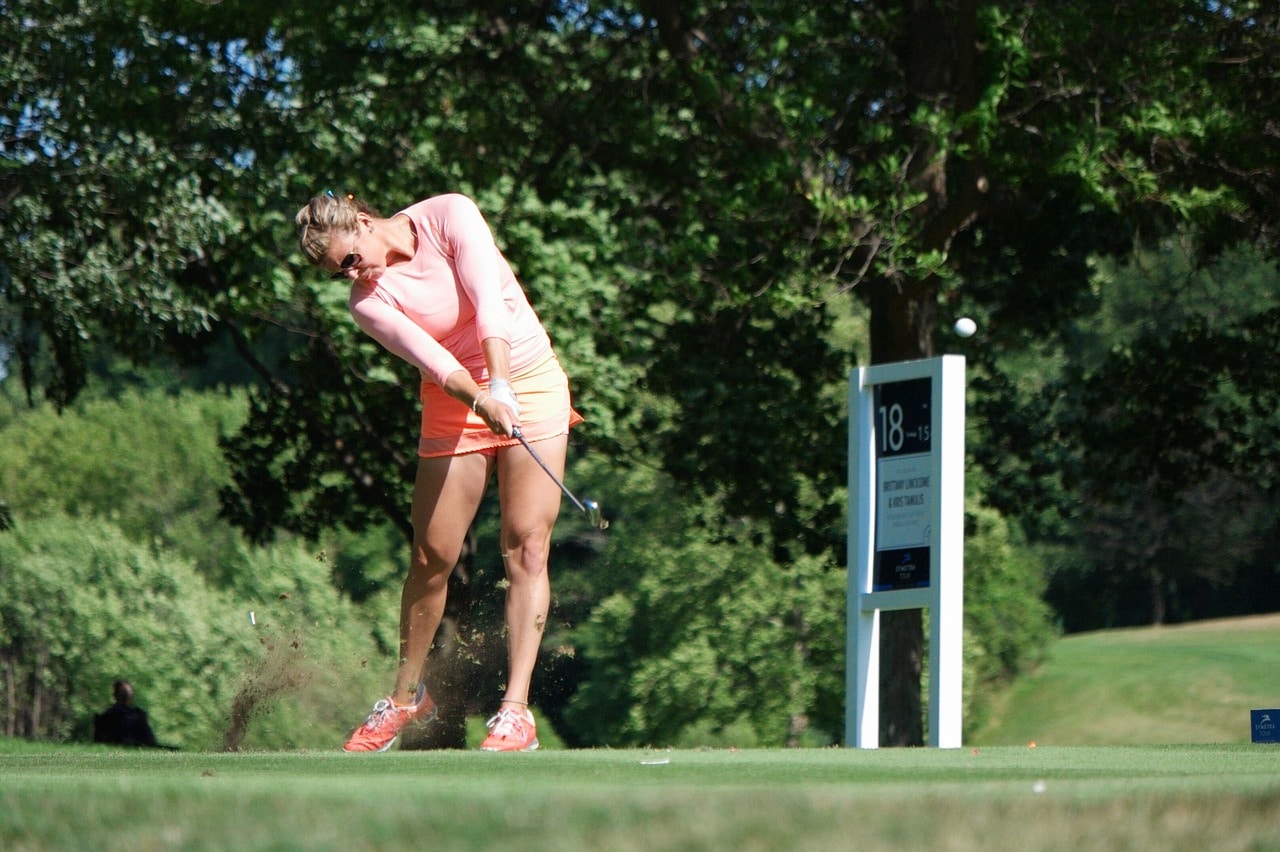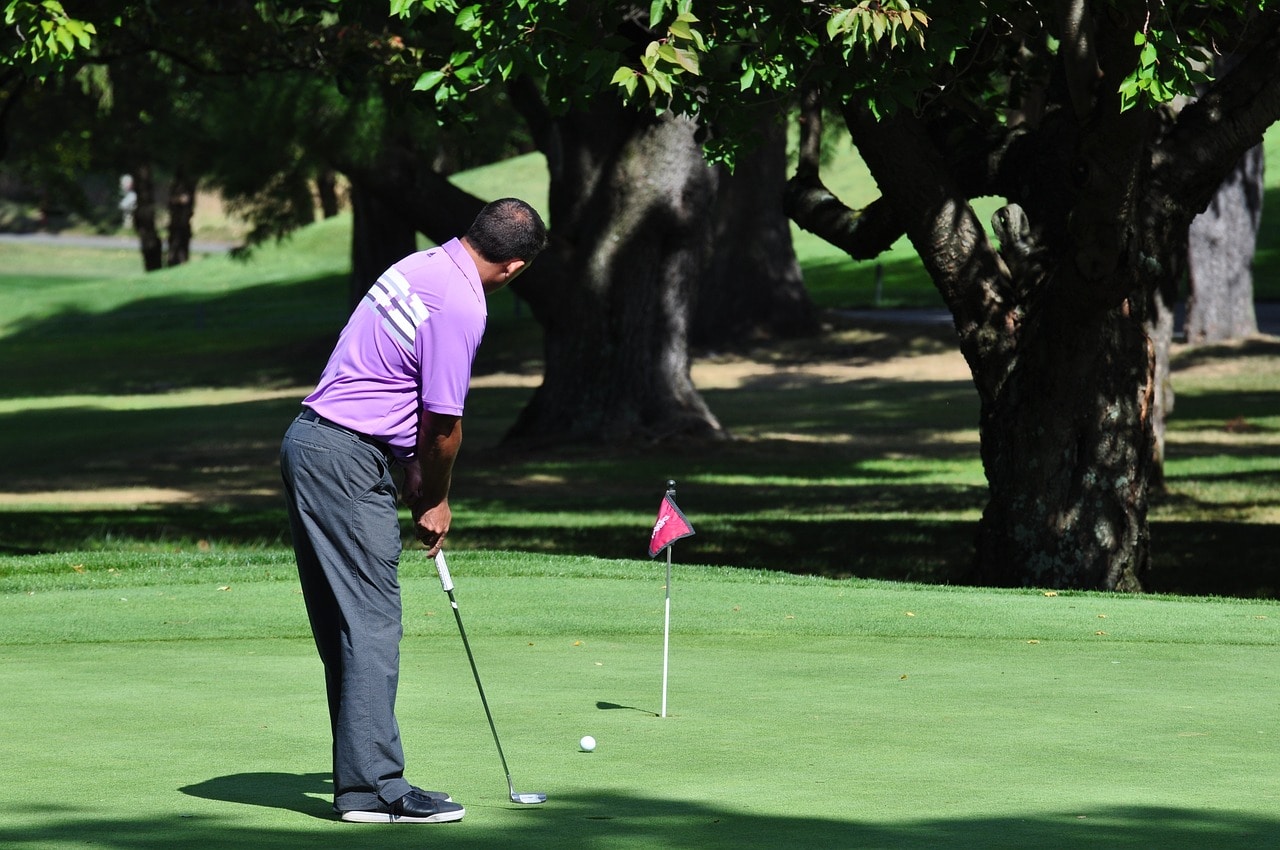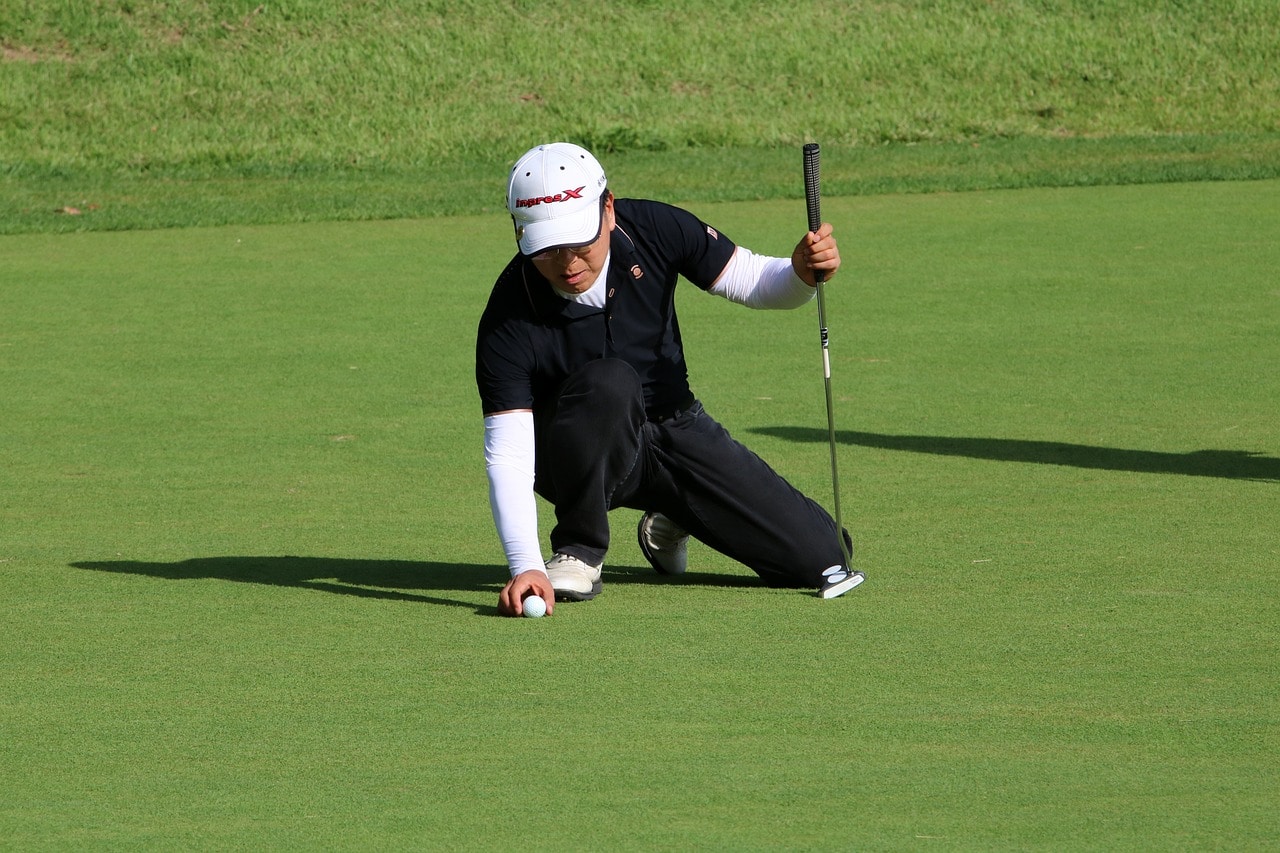Understanding The Different Components Of Golf Clubs
Table of Contents
Golf is a popular sport enjoyed by people from all walks of life. Knowing the different components of golf clubs and how to use them correctly can make it easier for any golfer, regardless of experience level, to improve their game. A great example of this happened recently when Jerry Smith, an amateur golfer who had been struggling with his chipping shots, finally figured out that he was using the wrong club shafts for his swing style. After switching to lighter weight shafts and taking some lessons on proper technique, Jerry’s scores improved dramatically within weeks!
Understanding the various components of golf clubs is critical in order to optimize one’s performance as a golfer. Every piece plays a role in maximizing power transfer while still allowing for accuracy and control. From grip size and design to material used for construction, there are many factors that come into play when selecting or customizing golf clubs. In addition, understanding what type of shot each club will produce allows players to develop better course management strategies.
The purpose of this article is to provide an overview of the different types of golf clubs available and explain how they work together. It will cover topics such as club selection guidelines, common materials used in construction, specifications such as loft angle and lie angle, and tips on optimizing performance through customization options like shaft stiffness and length adjustments. By providing an understanding about which parts do what when playing golf, readers will be able to take their games up to the next level!
Types Of Golf Clubs
It is no coincidence that when one sets out to learn about golf clubs, they may be struck with a sense of familiarity. After all, the different types of clubs used in the game vary from person to person but each club has its own unique purpose and design which makes them indispensable to those who are serious about their playing. That said, it is important for any golfer regardless of skill level or experience to understand what type of clubs can best benefit their style on the course.
The three main categories of golf clubs include woods, irons, and putters. Woods are typically designed as long-distance drivers and have a large head size compared to other clubs. These are usually made up of metal or graphite shafts and can come in five different lofts: 1-wood (driver), 3-wood (fairway wood), 5-wood (low fairway wood), 7-wood (high iron) & 9-wood (long iron). Irons commonly make up most players’ bag and consist mainly of mid distance shots with various lengths depending on the number associated with it. For example, a 2 iron will go further than an 8 iron because it has less loft. Finally Putters are shorter length clubs specifically designed for putting accuracy on the green. There are also hybrid clubs which combine characteristics from both woods and irons making them versatile tools for more technical shots around the green or off tee boxes.
Every golfer should strive to familiarize themselves with these different types of golf clubs so they can take full advantage when selecting specific ones for their set makeup; however there’s far more detail involved beyond just knowing what kind goes where inside the bag – like understanding the anatomy of each individual club itself.
Anatomy Of A Golf Club
The anatomy of a golf club consists of many important components, all of which affect one’s performance on the course. Understanding these parts is essential for any golfer looking to improve their game and make informed decisions when selecting clubs.
The head of the golf club contains several features that greatly influence how it performs. The size, weight, shape and material used can determine accuracy and distance as well as control during shots. The shaft is also an integral part in controlling your swing speed, direction, power and even trajectory. The flex rating on the shaft will dictate whether or not you should use this particular club depending upon your strength level at address.
Grips are just as vital when considering overall ball flight path control; they have a direct effect on feel and comfort while swinging. Loft angle affects launch angle, spin rate, carry distance and roll-out after the shot lands. Finally, the length of the golf club impacts where your hands are located at setup position versus impact area, thus affecting balance throughout the shot sequence.
As with most things related to sports equipment selection, each component should be given careful consideration before making a purchase decision. A knowledgeable teaching professional can help narrow down suitable options based off personal preferences and physical capabilities as well as provide insight into what type of club might work best for individual situations such as terrain or environmental factors like weather conditions. From there it becomes easier to decide which golf club could potentially give players an edge out on the links by helping them achieve desired results effectively and efficiently. With this information in hand, golfers now have the tools necessary for determining the right club for their game.
Determining The Right Club For Your Game
Choosing the right golf club for your game is an important part of improving your performance on the green. There are various components to consider, including club type and size, shaft length, and more. This article will focus on helping you determine which clubs are best suited for your game.
To begin, it’s essential to have an understanding of the different types of clubs available. Woods, such as drivers and fairway woods, provide distance off the tee and from the rough. Irons come in a variety of numbers that indicate loft angle; higher numbered irons with less loft while lower numbered irons possess greater loft angles – they are used primarily for approach shots close to the pin or when hitting out of hazards like bunkers or deep roughs. Wedges offer additional spin control and allow players to hit high-lofted shots around greenside obstacles or land balls softly onto putting surfaces. Hybrids combine features of both woods and long irons into one clubhead design capable of being utilized in multiple playing scenarios. Finally, putters make up the last category among traditional clubs; these flat sticks help players roll their ball accurately towards a hole from short distances away from it.
Armed with this knowledge about each club class’ characteristics and strengths, you can now start to evaluate what options might be best for your own play style. Begin by analyzing how far you typically hit each particular shot; this should give some indication as to what kind of club would be most appropriate for those situations (e.g., longer hitters may prefer stronger lofts in their wedges). Secondly look at any gaps that exist between certain numbers – if there isn’t enough difference between two iron sets then fill that gap by adding a hybrid instead; this will create more versatility within your bag without needing extra equipment taking up space inside it. Lastly establish whether or not certain clubs fit comfortably in hand depending on grip preference or simply feel better than others do at address position during practice swings before buying them outright – always try before making a final purchase decision!
Making sure each component fits properly together – club type/size + shaft length/flexibility – is paramount in ensuring good results occur when shooting out on course conditions encountered during rounds played every day. Doing so requires research beforehand but ultimately leads to improved scores through precise shotmaking capabilities gained over time thanks to having tailored equipment specifically designed for individual preferences found only after thoughtful deliberation has taken place prior to acquisition completion…transitioning now into discussing ‘shafts: length and flex’ further down below.
Shafts: Length And Flex
Shafts are like the veins of a golf club, carrying all the energy and momentum that is generated in each swing. Selecting the right shaft length and flex for your game is essential to maximizing performance. Here are four points to consider when making this important decision:
1) Shaft Length – Generally speaking, taller players should opt for longer clubs while shorter players should select shorter ones as they will be more comfortable and easier to handle.
2) Flex – This refers to how much the shaft bends or ‘kicks’ during impact with the ball. The greater flexibility provides increased power but less accuracy, whereas stiffer shafts offer improved control at the expense of distance. Identifying which type suits your playing style requires trial and error.
3) Frequency Matching – A good way to determine suitable flex options is frequency matching technology which measures vibrations in a particular club head speed range. It then recommends an ideal option based on its findings.
4) Weight Distribution– Different weight distributions can influence trajectory, spin rate and feel so it’s important to test out various models before settling on one that works best for you.
No matter what combination you go with, investing time into understanding different components such as shafts is key to unlocking your full potential as a golfer. By knowing what kind of characteristics suit your game, you can gain confidence in your equipment and know that every shot has been well-considered by you instead of relying solely on luck or guesswork. With these tips in mind, let’s look at grips; size and material being two key considerations here too.
Grips: Size And Material
Grips are an essential component of golf clubs and often overlooked when looking at club performance. They provide a secure connection between the golfer’s hands and the shaft, helping to ensure accuracy and consistency in shots. Unlike other components, grips come in various sizes and materials that can significantly affect how well a player performs during their round.
When selecting a grip size, it is important to consider both hand size and personal preference. Larger grips offer more stability but require more strength from the hands while smaller grips allow for greater finesse but may cause fatigue over time due to having less leverage with each swing. It is wise for any golfer to try out different grip sizes until they find one that provides optimal control.
In addition to size, material also plays an important role in choosing grips since some absorb moisture better than others or have added texture for improved traction in wet conditions. Golfers should be aware of what type of playing environment they will most likely encounter so they can select the best option accordingly. For example, if courses tend to get very humid then rubber-based options could be advantageous as opposed to ones made from synthetic leather which tend not withstand humidity as well.
No matter what kind of grip is chosen, understanding its purpose allows players to make informed decisions about their equipment setup. This knowledge can help them become more effective on the course by allowing them to adjust certain elements such as size or material based upon environmental factors like temperature or rainfall levels. With this insight into club construction, golfers can gain valuable insights into improving their game through making subtle changes in their gear selection process. By doing this, they can fine tune their clubs’ components according to individual needs and preferences which ultimately leads to better performance overall on the green.
Moving forward, it is important to understand clubhead design – particularly regarding face angle and loft – in order to maximize distance off the tee box or hit higher approach shots around greenside obstacles with ease.
Clubhead Design
As the golfer carefully examines their clubs, they can begin to appreciate the details of each component. Nowhere is this more evident than in clubhead design. With its intricate curves and shapes, it’s easy to be mesmerized by the craftsmanship that goes into every golf club head.
The shape and size of a clubhead has an effect on how efficiently power transfers from your body to the ball during a swing. Generally speaking, larger heads with deeper faces will help you hit longer shots as these are higher moment-of-inertia designs which reduce twist when the ball makes contact with the face. Smaller clubheads offer greater control but less distance for those seeking accuracy over raw power.
Clubface angle also plays a role in how far and accurately shots are struck, with smaller angles resulting in lower launch trajectories while higher angles generate more backspin and increased distance potential. Loft is another factor that affects trajectory; shallower lofts send balls further down range while steeper ones produce shorter, higher shots – an important consideration depending on whether you’re playing fairway or approach shots respectively.
Finally, understanding materials used in golf club construction offers further insight into optimizing performance: stainless steel tends to have better feel compared to titanium alloys but may lack durability long term; graphite shafts provide lightweight options yet may sacrifice stability; hybrids blend characteristics between woods and irons for versatility suited to different courses and players’ needs – no single option suits everyone so careful evaluation should yield best results.
Maintenance And Care Of Golf Clubs
The game of golf is an ancient one, and its components are as varied and intricate as the players who take part in it. Taking proper care of these pieces – from tee to green – can be a rewarding experience for any golfer. This article will explore how to properly maintain and care for golf clubs.
First and foremost, storing your clubs correctly is essential for maintaining their integrity over time. Keeping them in a well-ventilated area where they won’t suffer from extreme heat or dampness is key; if possible, store them indoors so that you’ll never have to worry about damaging weather elements affecting them. Additionally, avoid leaving the bags on rough surfaces such as gravel or concrete since this could cause the grips to become brittle with age.
It’s also important to regularly check up on your equipment frequently. Take inventory of each club; make sure nothing has been damaged during play or storage, ensuring that all parts are securely attached and functioning properly. Wipe down each piece after every round using a soft cloth along with some warm water and mild soap; this process will help eliminate dirt buildup which can impede performance levels and damage the metal of the clubhead itself over time. In addition, inspect shafts for dents or breaks at least once per season – replace any broken components right away before playing rounds again with them.
Finally, cleaning out grooves should be done carefully but often; use brushes specifically designed for this purpose when necessary while avoiding harsh chemicals like bleach or steel wool – these may do more harm than good! With regular upkeep and maintenance, you’ll find that having quality golf clubs makes all the difference in achieving success both on the course and off. It need not be seen as a chore either: taking good care of your belongings helps develop bonds between player and equipment alike which only further enhances satisfaction gained through gameplay experiences shared together.
Conclusion
Golf clubs are an important part of the game, providing players with a range of options to choose from. Understanding the components and features of each club is essential in determining which type is best suited for your playing style. Knowing how to select shafts based on length and flex, grips based on size and material, as well as clubhead design can help you play more effectively and confidently. Additionally, proper maintenance and care should be taken when using golf clubs so that they perform optimally for many years to come.
From drivers to putters, there’s a variety of golf clubs designed to give players an edge over their competition. The right combination of these tools helps create a powerful weapon that has the potential to produce exceptional results on the course. With knowledge and practice, understanding the different parts of golf clubs will become second nature, allowing one’s skillset to grow exponentially.
Overall, it’s no secret that having familiarity with all aspects of golf clubs offers invaluable insight into improving one’s performance on the links. By studying their various characteristics such as length, flex, material, etc., players have access to powerful weapons capable of achieving success at any level. It may take time and effort but mastering this critical element can make all the difference between triumph or defeat out there on the fairway!




